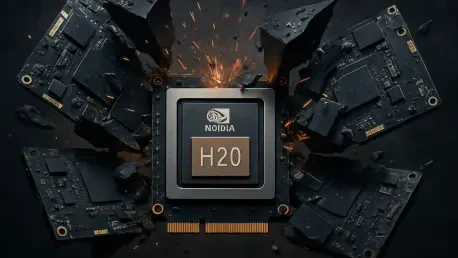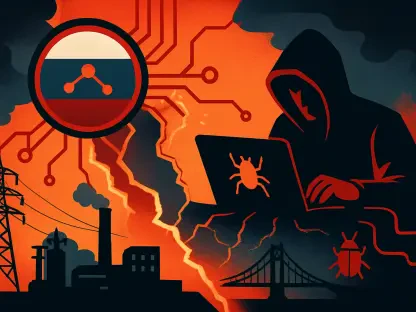What happens when a tiny semiconductor becomes the center of a global storm? In a world increasingly driven by artificial intelligence, the battle over Nvidia’s ##0 chip reveals a high-stakes drama between technological innovation and national security, raising a critical question about whether trust can coexist with cutting-edge tech in an era of geopolitical rivalry. This unfolding conflict between a US tech giant and a rising superpower promises to reshape the landscape of global technology.
The Stakes of a Single Chip
At the heart of this dispute lies the ##0 chip, a product engineered by Nvidia to comply with stringent US export controls while still serving China’s massive AI market. The significance of this tiny piece of hardware cannot be overstated—it powers everything from autonomous vehicles to medical systems, making it a linchpin of modern innovation. Yet, for China, it’s also a potential Pandora’s box, with fears of hidden vulnerabilities that could compromise entire industries or even national defense.
This clash is more than a technical disagreement; it’s a microcosm of the broader US-China tech rivalry that defines global power dynamics today. With semiconductors now as critical as oil once was, the outcome of this controversy could dictate who controls the future of AI and, by extension, economic and military dominance. For tech leaders and policymakers alike, the implications ripple far beyond a single product, touching on issues of trust, security, and sovereignty.
A Tech Cold War in Full Swing
The backdrop to this controversy is a technological standoff that mirrors the ideological battles of the Cold War. The United States has tightened export controls to curb China’s access to advanced chips, viewing them as strategic assets that could fuel military advancements. Meanwhile, China is pouring resources—evidenced by a $47.5 billion fund launched this year for domestic semiconductor production—into reducing reliance on foreign tech, driven by a desire for self-sufficiency.
This escalating tension has turned chips like the ##0 into symbols of a larger struggle. US policies, including tariffs hitting 54.9% on Chinese goods, are matched by China’s retaliatory tariffs of 32.6% on American exports. The result is a fractured global supply chain, with US semiconductor firms already losing $130 billion in market cap since export restrictions intensified over recent years. This economic fallout underscores how deeply intertwined technology and geopolitics have become.
China’s Security Concerns Under the Microscope
China’s apprehension centers on allegations that Nvidia’s ##0 chip might harbor backdoors, allowing remote access or shutdowns that could wreak havoc. The Cyberspace Administration of China (CAC) has publicly demanded answers, pointing to what they call “serious security issues” in the chip’s design. State media outlets have amplified these fears, painting grim pictures of vehicles stalling mid-traffic or surgical systems failing during critical operations due to potential vulnerabilities.
Adding fuel to the fire, Chinese officials reference US legislative moves, such as a recent Chip Security Act mandating tracking systems in AI chips, as proof of possible surveillance capabilities. This suspicion isn’t merely technical—it’s rooted in a profound mistrust of American intentions, with state publications like the People’s Daily sharply questioning, “Nvidia, how can we trust you?” The rhetoric highlights a broader anxiety about technological dependency in a world where data is power.
Nvidia’s Defense Amid Mounting Pressure
Nvidia, caught between two global giants, has staunchly denied any wrongdoing. A company spokesperson reiterated, “Cybersecurity is critically important, and no mechanisms for remote access or control exist in our products.” This assertion aims to quell fears, but it faces skepticism from Chinese authorities who demand tangible proof rather than promises, pushing for detailed technical disclosures.
The company’s position is complicated by its need to navigate US regulations while maintaining a foothold in China’s lucrative market. Balancing compliance with American export laws against addressing Beijing’s security demands places Nvidia in a precarious spot. The outcome of this standoff could set a precedent for how tech firms operate in politically charged environments, where corporate decisions are as much about diplomacy as they are about innovation.
Ripple Effects on Global Tech Ecosystems
Beyond the immediate players, the ##0 chip dispute sends shockwaves through the global tech ecosystem. Semiconductor supply chains, already strained by trade wars, face further disruption as companies grapple with dual regulatory pressures. Enterprises worldwide are forced to rethink sourcing strategies, with some looking to diversify beyond US and Chinese markets to mitigate risks from escalating tariffs and bans.
The financial stakes are staggering, as seen in the massive investments and losses reshaping the industry. For businesses relying on AI hardware, the uncertainty surrounding products like the ##0 chip raises questions about long-term reliability and security. This isn’t just a corporate issue; it’s a challenge for governments and societies dependent on technology for everything from healthcare to defense, highlighting the urgent need for resilient and transparent supply frameworks.
Looking Ahead After the Storm
Reflecting on this clash, it became clear that the Nvidia ##0 controversy had exposed critical fault lines in the intersection of technology and geopolitics. The intense scrutiny from China and the firm denials from Nvidia underscored a fundamental lack of trust that no press statement could easily mend. Each side had dug in, with allegations and counterclaims painting a picture of a world where innovation was as much a weapon as a tool for progress.
Moving forward, actionable steps emerged as essential for navigating this complex terrain. Tech leaders needed to prioritize independent cybersecurity audits to reassure skeptical markets, while policymakers had to foster dialogue for clearer compliance standards across borders. Diversifying supply chains and preparing for a fragmented tech landscape stood out as practical measures to buffer against future conflicts. Ultimately, this episode served as a reminder that building trust in technology required more than just cutting-edge design—it demanded transparency and collaboration in an increasingly divided global stage.









